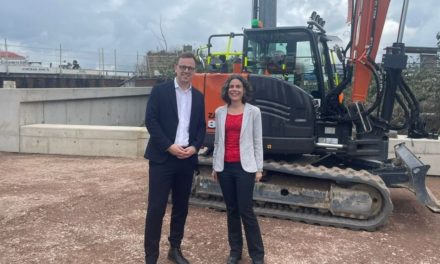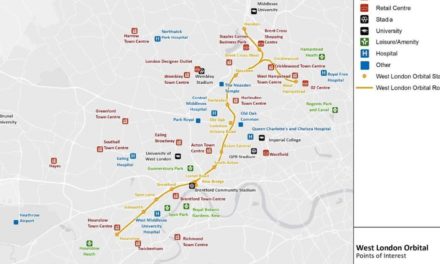Adam Hardy of Devcomms looks ahead to the Ealing council election in May.
Ealing Borough Council is currently firmly under Labour control, with 57 Labour councillors, eight Conservatives and four Liberal Democrats. The 2018 elections saw many Labour candidates pick up comfortable majorities, in many instances improving on results from 2014. However, recent controversies in the borough, including local development issues, could be at the forefront of local campaigning.
A New Leader for Ealing
The current leader is Cllr Peter Mason, who replaced long-standing previous incumbent Cllr Julian Bell in May 2021, ousted amid unpopular developments and controversial Low Traffic Neighbourhoods (LTNs). Cllr Mason promised an ‘open, inclusive and transparent’ council which may be seen as a positive change in a borough which has faced criticism for having an uneasy relationship with developers.
Immediately upon becoming Leader, Cllr Mason announced a new approach towards development, putting community-led development at the heart of regeneration. Measures announced included ‘town development plans, created with communities’ and a publicly accessible register of meetings between developers and councillors. Crucially, there will be ‘no Ealing councillor attendance at the MIPIM conference in France.’ The last commitment is no doubt in response to criticism Cllr Mason faced over sponsorship by developers to attend MIPIM in 2019 while Cabinet Member for Housing and Planning.
There has also been some criticism surrounding Cllr Mason’s previous public affairs role with Commonplace, an engagement platform specialising in the development sector. The platform was used for the Ealing LTN consultation while Cllr Mason was both working for the Commonplace and a councillor. The Ealing Conservative Group called the move ‘a clear and obvious conflict of interest.’
Another concern for the Labour Group is the results from the 2021 Mayoral elections. In Ealing and Hillingdon constituency, more people voted for Shaun Bailey (Conservative) than Sadiq Khan (Labour) as their first preference, a significant change from the previous Mayoral election.
Wards to watch: Ealing Common and Northfield
Cllr Mason may find it hard to avoid some criticism over the infamous Low Traffic Neighbourhoods (LTNs) that contributed to his predecessor’s downfall. This may influence the results in two key wards: Ealing Common and Northfield.
In summer 2021 a consultation survey showed seven of the nine LTNs implemented in Ealing were opposed by the majority of residents living on the affected roads. It was only in October 2021 that these LTNs were removed, and voters may feel aggrieved both at the delay and any fines received during this period.
Mapping survey data for the original LTNs against election data from 2018 shows that, luckily for Labour, five of the seven unpopular LTNs were located in wards with strong Labour majorities (based on the ward layout before the ward boundaries changed).
It is a different story in Ealing Common and Northfield. The Olive Road LTN in Ealing Common was opposed by 63 per cent of LTN residents and 90 per cent of boundary road residents in the consultation survey. The sole Labour seat here looks vulnerable: Cllr Praveen Anand gained a majority of 204 at the 2018 elections, and at the 2014 elections no Labour candidate was elected at all.
The Junction Road LTN in Northfield ward faced a similar backlash in the survey, rejected by 67 per cent of LTN residents and 92 per cent of boundary road residents. Northfield is currently represented by two Labour councillors (Fay Block and Paul Driscoll), who are on majorities 384 and 211. This ward was entirely Conservative in both 2014 and 2010, meaning the possibility of Labour losing control here in response to the LTN is not out of the question. The other Northfield member is Conservative councillor David Millican. Despite a narrow majority in 2018, Cllr Millican has frequently criticised Ealing’s LTNs, which puts him on the front foot for this year’s elections.
Tall Towers
Some schemes in Ealing linked with Crossrail have also proved particularly unpopular. One of the more notorious schemes is the 55 West Tower, next to West Ealing station on Manor Road. The proposals fuelled a ‘Stop the Towers’ campaign group and thousands of objections. While Ealing Council rejected the application in late 2020, citing a ‘detrimental impact on the character and appearance of the surrounding area,’ the scheme was later approved via appeal in October 2021.
The current Labour administration responded in January this year to concerns around tall buildings with new Local Planning Policy Guidance. Cllr Mason also publicly stated that the Council does ‘not want to see the spread of skyscrapers in Ealing.’
The tower has not stayed out of the news thanks to closures at West Ealing station likely caused by the construction site. It was also revealed that the developer had not submitted a construction management plan, and in response Ealing Council promptly stopped work at the site.
Under the new ward boundaries, the 55 West Tower site sits at the intersection of four wards: Ealing Broadway, Walpole, Hanwell Broadway (formally Elthorne), and Pitshanger (formally Cleveland). Conservative controlled Ealing Broadway and Labour controlled Elthorne/Hanwell Broadway seem unlikely to change.
The three Labour councillors at Cleveland/Pitshanger may be in a more precarious position due to a history of Conservative wins in the ward (although ward member Cllr Linda Burke has spoken against the proposals) It could be a similar story with Walpole ward, which was a Conservative ward in 2010 and under the new boundaries has gained several streets within 300 metres of the Manor Road site.
The 55 West development is just one of the many tower blocks being planned and constructed in Ealing Borough. At North Acton, a ‘new town centre’ of several 50+ story towers is taking shape at Portal Way, near the site of the Holiday Inn West, a scheme which some residents feel will irrevocably change the skyline of their local area.
Whoever stands for election this year will likely face a challenge appeasing voters in a borough which is seeing rapid change to its skyline. While it seems very unlikely the control of the Council will change, in some wards these elections could become a referendum on interventions in the built environment, be it LTNs or new development.
Devcomms will provide a full analysis of the London election results in May 2022.
© London West (powered by ukpropertyforums.com).
Sign up to receive your free bi-weekly London West journal here














